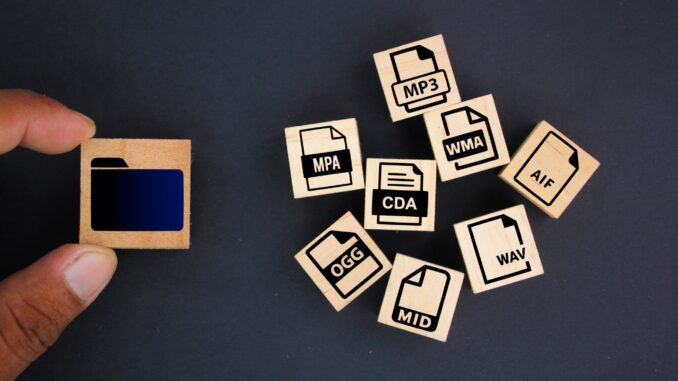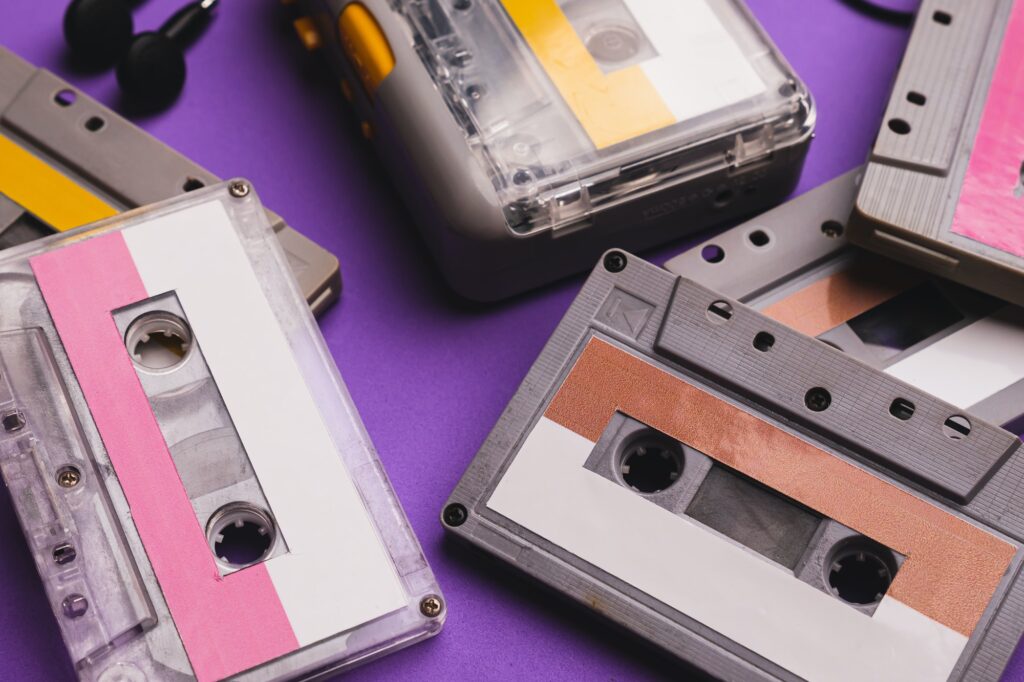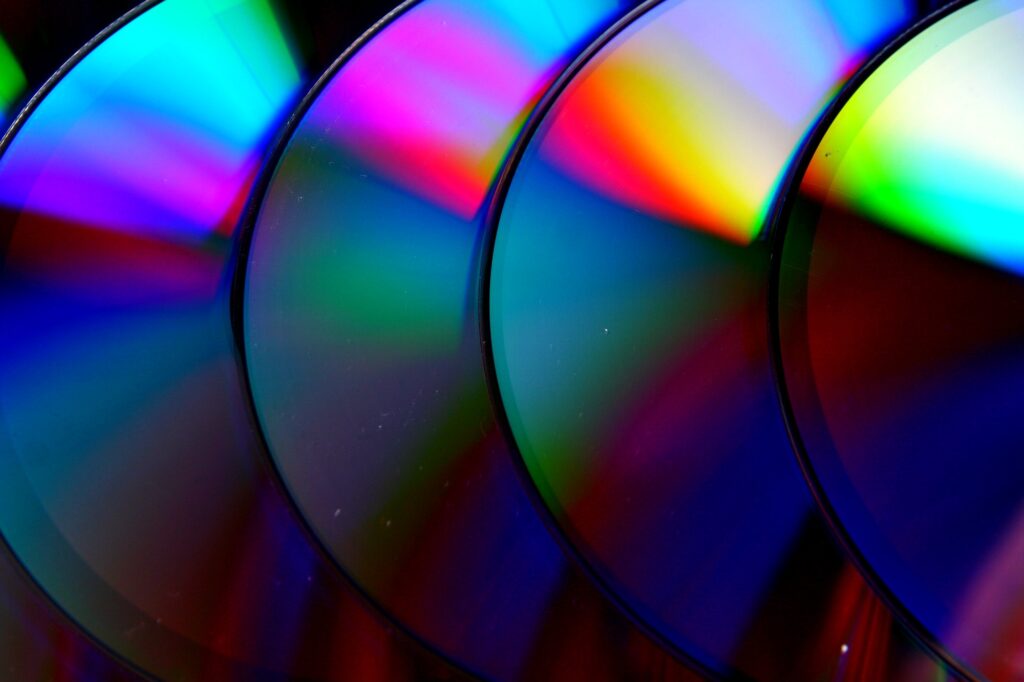
In the ever-evolving world of audio technology, the battle between different audio formats has raged for years. From vinyl records to cassette tapes, CDs, and now streaming services, each format has promised to deliver the ultimate listening experience. But which one truly reigns supreme? In this article, we will delve into the pros and cons of each audio format, exploring their unique characteristics and how they impact our overall listening pleasure. Whether you are a die-hard vinyl enthusiast, a nostalgic cassette lover, or a tech-savvy streaming junkie, this is the ultimate guide to help you decide which audio format will provide you with the most immersive and satisfying sound experience. So buckle up, grab your headphones, and prepare to embark on a journey through the mesmerizing world of audio formats. Let the battle begin!
Standard audio formats and their features
Audio formats have come a long way since the early days of analog recordings. Today, we have various formats, each offering its features. Let’s take a look at some of the most common audio formats and what sets them apart from one another.
Vinyl Records

Vinyl records have experienced a resurgence in popularity in recent years thanks to their warm and rich sound quality. The analog nature of vinyl records allows for a more natural and authentic listening experience. However, they are not without their drawbacks. Vinyl records are prone to wear and tear, and they require special equipment and care to maintain their sound quality. Additionally, vinyl records are not as portable or convenient as digital formats, making them more suitable for dedicated audiophiles and collectors.
Cassette Tapes

Cassette tapes were a staple of the 80s and 90s, offering a portable and affordable way to listen to music. While they may evoke feelings of nostalgia, cassette tapes are not known for their high-quality sound. They are prone to tape degradation and hissing noises, which can detract from the listening experience. Cassette tapes are also limited in terms of storage capacity and are less durable compared to other formats.
CDs

CDs revolutionized the music industry when they were introduced in the 1980s. They offered superior sound quality compared to cassette tapes and vinyl records, with their digital format allowing for crisp and clear audio reproduction. CDs are also more durable and portable than vinyl records, making them a popular choice for music enthusiasts. However, CDs are slowly becoming obsolete as digital streaming services take over the market.
Streaming Services

Streaming services have completely transformed the way we consume music. Platforms like Spotify, Apple Music, and Tidal offer instant access to millions of songs in various audio formats. The convenience and portability of streaming services have made them a favorite among music lovers. However, the audio quality provided by streaming services can vary depending on the format used. We will explore this further in the next section.
” AN AUDIO TIMELINE” from the Audio Engineering Society (AES)
Lossy vs. lossless audio formats
When it comes to digital audio formats, there are two main types: lossy and lossless. Lossy audio formats, such as MP3 and AAC, compress the audio data to reduce file size. This compression results in some loss of audio quality, although it is often imperceptible to the average listener. Lossless audio formats, on the other hand, preserve the original audio data without any compression, resulting in higher audio fidelity. Formats like FLAC and WAV fall into this category.
Understanding the difference between lossy and lossless formats is crucial when choosing an audio format. Lossy formats are more suitable for casual listening or when storage space is a concern. Lossless formats, on the other hand, are preferred by audiophiles and those who prioritize audio quality above all else.
Understanding the importance of audio quality
Audio quality plays a significant role in our overall listening experience. It can make the difference between a song that transports us to another world and one that falls flat. The audio format we choose directly impacts the quality of the sound we hear.
The bit rate and sample rate of an audio file are two essential factors that determine its quality. The bit rate refers to the amount of data used to represent the audio per second, while the sample rate determines the number of samples taken per second to capture the audio. Higher bit rates and sample rates generally result in better audio quality, but they also lead to larger file sizes.
Factors such as the quality of the recording, mastering, and playback equipment also play a role in audio quality. It’s essential to consider these factors alongside the audio format when aiming for the best listening experience.
Factors to consider when choosing an audio format
When choosing an audio format, several factors come into play. Here are some key considerations to keep in mind:
Sound Quality
The primary factor to consider is the sound quality. Different audio formats offer varying levels of audio fidelity. If you are an audiophile or someone who values high-quality sound, lossless formats like FLAC or WAV are the way to go. However, if you are not too concerned about slight audio quality differences, lossy formats like MP3 or AAC may suffice.
Compatibility
Compatibility is another crucial factor. Some audio formats may not be supported by all devices or software. It’s important to choose a format that can be played on your preferred devices or streaming platforms. MP3, for example, is widely supported and compatible with most devices and software.
File Size
File size is an important consideration, especially if you have limited storage space. Lossy formats compress audio data, resulting in smaller file sizes. Lossless formats, on the other hand, retain all the audio data, leading to larger file sizes. If storage space is a concern, you may opt for lossy formats like MP3 or AAC.
Portability
Portability is a factor to consider if you enjoy listening to music on the go. Vinyl records and even CDs are not the most portable options. Digital formats and streaming services offer the most convenience in terms of portability, allowing you to access your music library wherever you go.
Personal Preference
Ultimately, personal preference should play a significant role in choosing an audio format. If you have a deep appreciation for the analog warmth and nostalgia of vinyl records, no digital format can replicate that experience. Similarly, if you prefer the convenience and vast music libraries offered by streaming services, the audio format may not be as critical.
Comparing popular audio formats – MP3, FLAC, WAV, and AAC
Now that we have explored the different audio formats and the factors to consider when choosing one, let’s compare some of the most popular formats in more detail: MP3, FLAC, WAV, and AAC.
MP3
MP3 is undoubtedly the most well-known and widely used audio format. It revolutionized how we listen to music by allowing for high-quality audio compression. MP3 files are relatively small in size, making them easy to store and share. However, the compression used in MP3 files results in a loss of audio quality, especially at lower bit rates.
FLAC
FLAC (Free Lossless Audio Codec) is a lossless audio format that offers the same audio quality as the source material. It is popular among audiophiles who prioritize audio fidelity. FLAC files are significantly larger than MP3 files but retain all the audio data, ensuring a more accurate and detailed listening experience.
WAV
WAV (Waveform Audio File Format) is another lossless audio format commonly used in professional recording studios. Like FLAC, WAV files retain all the audio data without any compression. This results in excellent audio quality but also leads to larger file sizes. WAV files are often used for archiving and professional audio production purposes.
AAC
AAC (Advanced Audio Coding) is a lossy audio format that offers improved audio quality compared to MP3 at the same bit rate. It is the default format used by iTunes and is widely supported by Apple devices. AAC files are generally smaller in size compared to MP3 files, making them a good choice for those who prioritize space savings without compromising too much on audio quality.
Pros and cons of each audio format
Each audio format has its own set of advantages and disadvantages. Let’s take a closer look at the pros and cons of MP3, FLAC, WAV, and AAC:
MP3
Pros:
– Widely supported by devices and software
– Small file sizes
– Easy to share and distribute
Cons:
– Lossy compression results in a loss of audio quality
– Not suitable for audiophiles or those who prioritize high-quality sound
FLAC
Pros:
– Lossless audio format, retaining all the audio data
– Excellent audio quality, suitable for audiophiles
– Supports metadata and album art
Cons:
– Large file sizes
– Limited compatibility with some devices and software
– Not widely supported by streaming services
WAV
Pros:
– Lossless audio format, preserving the original audio data
– Excellent audio quality, ideal for professional use
– Widely supported by devices and software
Cons:
– Huge file sizes
– Not suitable for streaming or online distribution
– Limited metadata support compared to other formats
AAC
Pros:
– Improved audio quality compared to MP3 at the same bit rate
– Smaller file sizes compared to MP3
– Widely supported by Apple devices and iTunes
Cons:
– Lossy compression results in a slight loss of audio quality
– Limited compatibility with non-Apple devices and software
– Not as widely supported by streaming services as MP3br/>br/>
The impact of audio format on streaming and downloading
With the rise of streaming services, the choice of audio format has become even more important. Streaming platforms use different audio codecs and bit rates to deliver music to their users. This can significantly impact the audio quality experienced by the listeners.
Most streaming services, such as Spotify and Apple Music, use lossy audio formats like MP3 or AAC for their music catalogs. This is done to reduce bandwidth and storage requirements while still providing a satisfactory listening experience. However, the audio quality of streamed music can vary depending on the bit rate used. Higher-quality streaming options, such as Spotify’s “Extreme” or Tidal’s “HiFi” subscriptions, offer higher bit rates and better audio quality.
When it comes to downloading music, the choice of audio format is entirely up to the user. Many online music stores offer a variety of formats, including lossy and lossless options. It’s essential to consider storage space, audio quality, and device compatibility when deciding which format to download.
The future of audio formats
As technology continues to evolve, so too will audio formats. We can expect to see advancements in audio compression algorithms, leading to even more efficient and higher-quality formats. The demand for lossless audio formats may grow as more people become aware of their benefits. Additionally, with the increasing popularity of high-resolution audio and immersive technologies like virtual reality, audio formats may need to adapt to meet the demands of these new experiences.
Conclusion: Finding the perfect audio format for your listening needs
In the battle of audio formats, there is no one-size-fits-all solution. The perfect audio format depends on your preferences, listening habits, and priorities. Streaming services may be the way to go if you value convenience and portability. Lossless formats like FLAC or WAV are worth considering if you are an audiophile seeking the highest possible audio quality. Ultimately, the most important thing is to enjoy the music and immerse yourself in the experience, regardless of your chosen format. So go ahead, explore the mesmerizing world of audio formats, and find the one that delivers the ultimate listening experience. Happy listening!
